Trouble sleeping? 'Moon breathing' can reduce anxiety at night, says expert
We spoke to an expert to find out how this breathing technique can help calm you before bed

Even when you've created the perfect environment for sleep and are exhausted from a busy day, sleep can be elusive if you experience nighttime anxiety — which can include trouble relaxing, night sweats, panic attacks and increased waking during the night. But what if we told you that an ancient yogic breathing technique could be a tool in your arsenal to challenge it?
Moon breathing is a term that has become more popular more recently thanks to social media platforms like TikTok. This breathing technique is focused on using your left nostril, and can lead to a range of benefits, including activating the parasympathetic nervous system (the part of our autonomic nervous system associated with relaxation), lowering the heart rate and preparing the body and mind for sleep.
To explore more about what moon breathing is, exactly why it can help with nighttime anxiety and sleep, and how you can try it, we've spoken to licensed clinical psychologist specializing in sleep and trauma, and yoga teacher, Dr. Leah Kaylor Ph.D. PLLC..
What is moon breathing?
"Moon breathing is a calming yogic breathwork technique rooted in ancient Indian practices of pranayama. In yogic philosophy, the left nostril is associated with lunar (moon) energy—cool, calm, and introspective," says Dr. Kaylor.
It's a breathing exercise that involves inhaling slowly through your left nostril only, while keeping the right nostril closed, then exhaling through the right nostril while closing the left.
A paper published in Nature exploring the changes in brain activity recorded by EEG during nasal breathing noted that, "Yogic practices suggest, and scientific evidence demonstrates, that right-nostril breathing is involved with relatively higher sympathetic activity (arousal states), while left-nostril breathing is associated with a relatively more parasympathetic activity (stress alleviating state)."
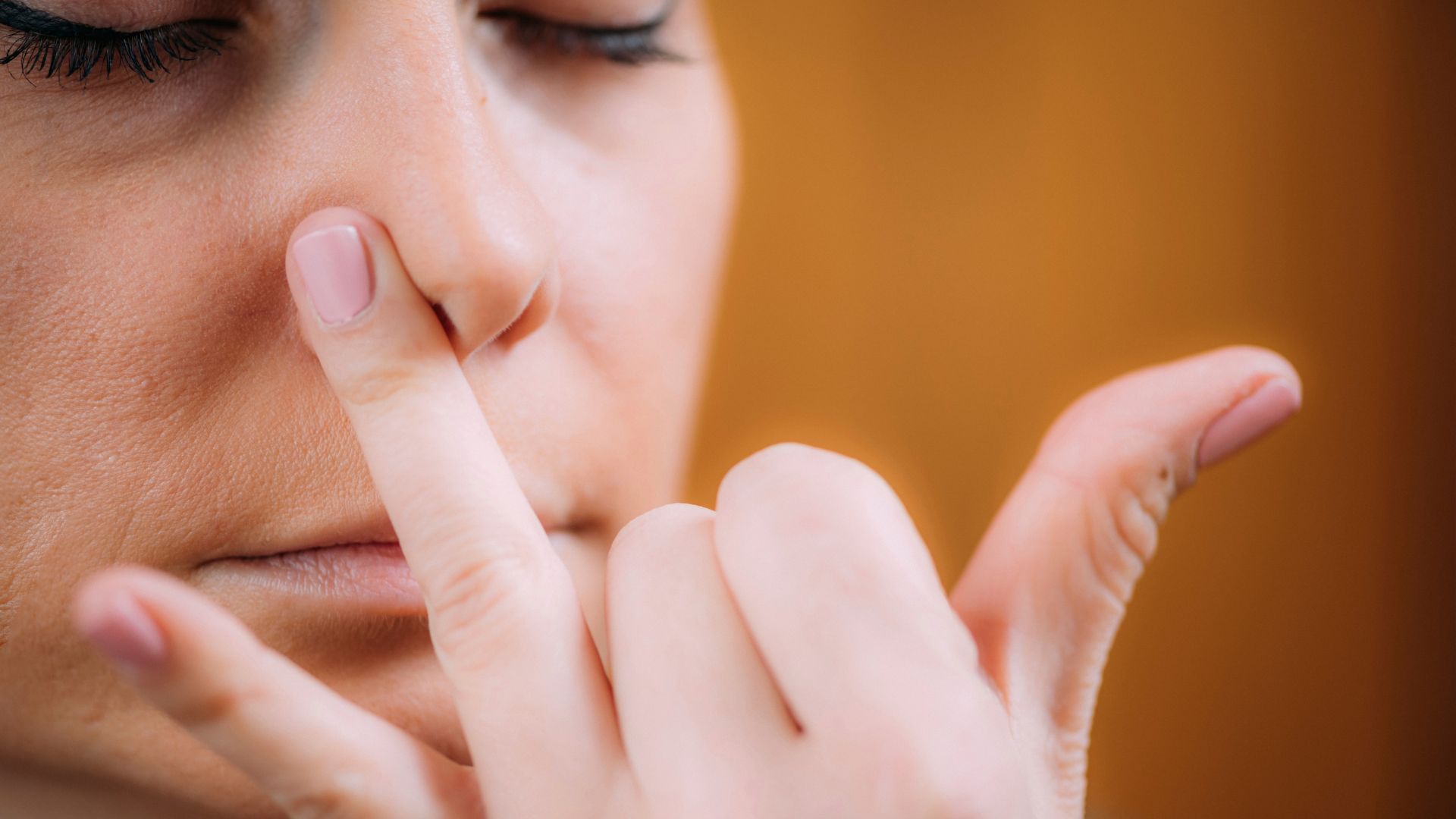
"By breathing exclusively through the left nostril, this technique is thought to activate the parasympathetic nervous system, promoting relaxation and emotional ease," explains Dr. Kaylor.
Get instant access to breaking news, the hottest reviews, great deals and helpful tips.
The sympathetic nervous system (SNS) and the parasympathetic nervous system (PNS) are both part of our autonomic nervous system, with research noting that the former is connected to our alert, "fight or flight," response and the latter with "rest and digest" processes, when we are in a relaxed state.
How does moon breathing work?
"Moon breathing works by channeling breath solely through the left nostril, which is believed to stimulate the brain’s right hemisphere — the part associated with calmness, intuition, and emotional regulation," says Dr. Kaylor.
The benefits of this, she says, can include reducing sympathetic (stress) arousal, activating the parasympathetic nervous system and lowering heart rate and blood pressure.
Plus, moon breathing can help promote mental stillness and emotional grounding, and prepare our bodies for introspection, rest or sleep.
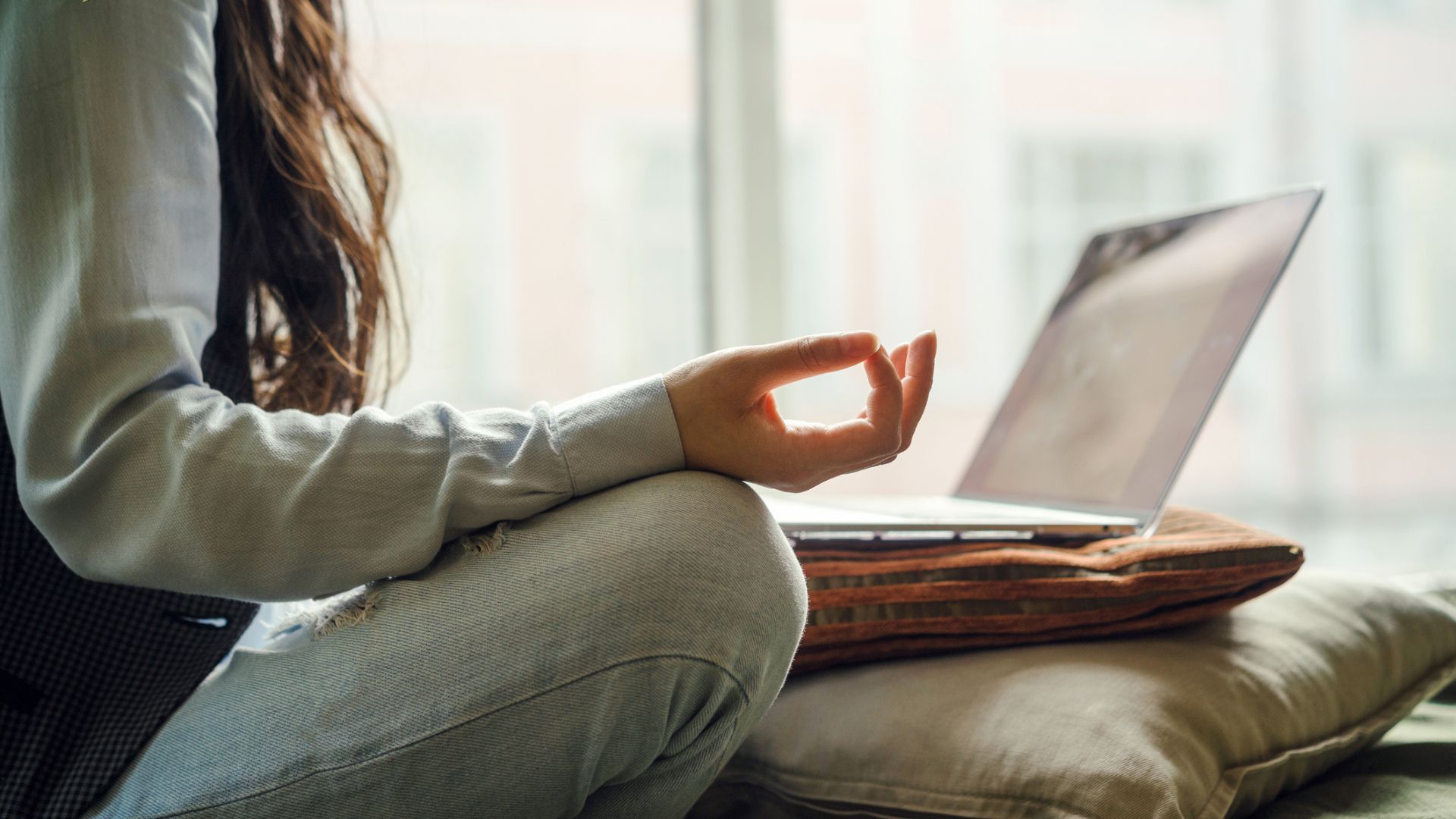
One study looked at the effect of different yogic breathing techniques that utilise the left and right nostrils, and both, to see if they had differing effects on reaction time, heart rate and blood pressure.
The researchers concluded from their results that moon breathing was among the left nostril techniques that "may induce a state of parasympathetic dominance as seen in (cardiovascular) parameters."
They further noted that their findings are in line with "the traditional swara yoga concept that... the flow through left nostril (chandra nadi and ida swara) is relaxatory."
Dr. Kaylor explains that moon breathing is particularly effective for pre-sleep anxiety because it:
- Slows respiratory rate, calming physical signs of panic
- Focuses attention, interrupting mental spirals or intrusive thoughts
- Stimulates vagal tone, lowering stress hormone levels (like cortisol)
- Gives the brain a rhythm to follow, which settles overstimulation and racing thoughts
- This left-nostril technique is especially useful when anxiety manifests as a racing heart, shallow breath, or cognitive overload in the evening
How can you use moon breathing to reduce nighttime anxiety?
If you're experiencing regular nighttime anxiety, it's important to consult a medical professional for advice.
If you want to incorporate moon breathing into your nighttime routine as a tool to combat it, Dr. Kaylor has some simple steps you can follow.
- Sit comfortably or lie down in a quiet, dim space
- Rest your right hand near your nose, using the thumb and ring finger
- Close your eyes and mentally prepare to relax
- Close your right nostril gently with your thumb
- Inhale slowly through your left nostril for about 4–6 seconds
- Release your right nostril, and optionally close your left nostril with your ring finger
- Exhale slowly through the right nostril, for 4–6 seconds
- Repeat this cycle for 5–10 minutes, or until you feel calm
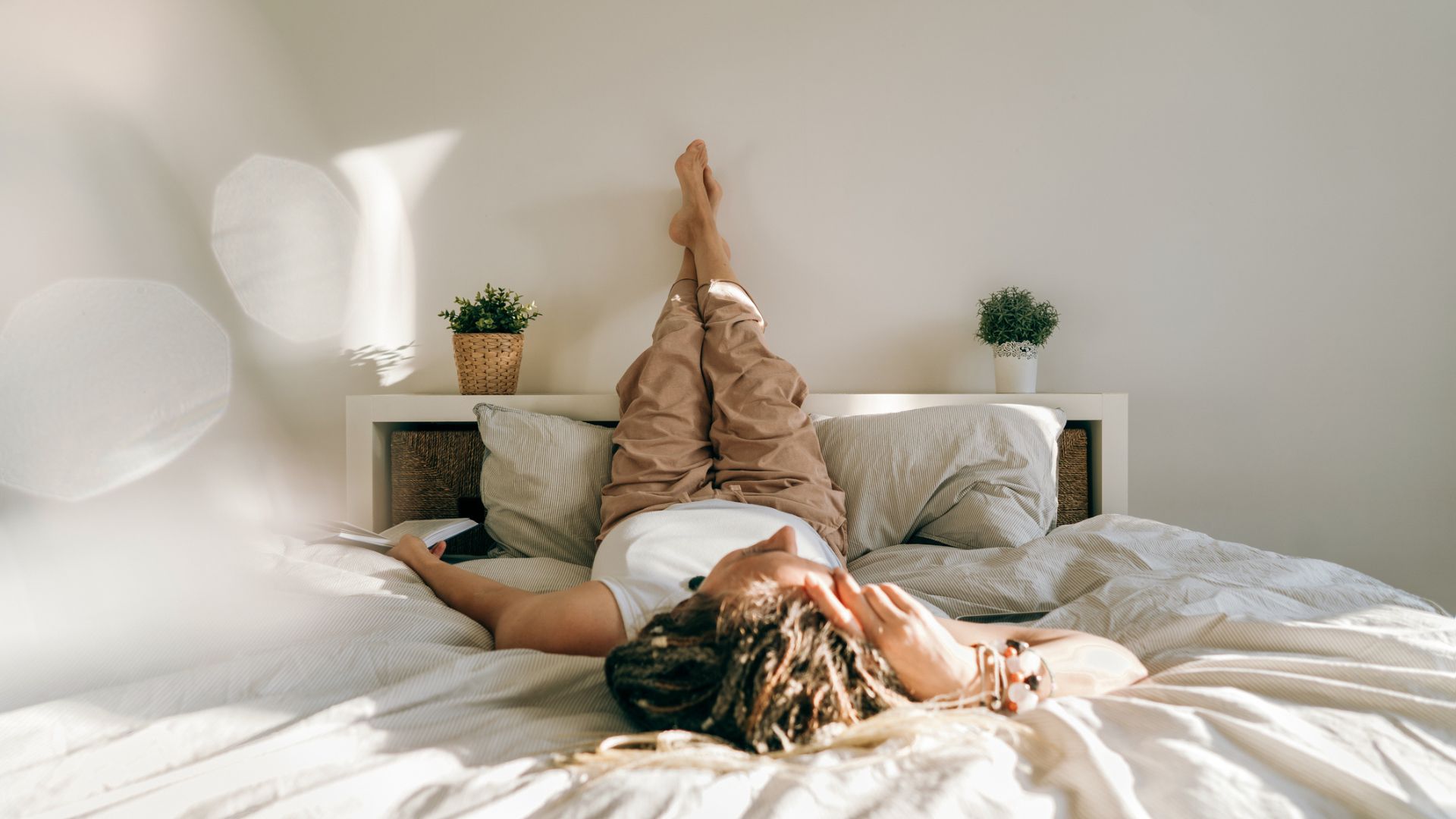
How does it compare to the 4-7-8 method?
The 4-7-8 method is a breathing technique that gained popularity after Dr. Andrew Weil began teaching it, and involves breathing in through your nose for a count of four, holding that breath for a count of seven, and then slowly breathing out through your mouth for a count of eight.
Dr. Kaylor explains that the main difference between these two breathing techniques is that "moon breathing is through one nostril."
"Moon breathing is best for highly anxious or overstimulated individuals," she says, explaining that it is "ideal for those experiencing hyperarousal or sympathetic overdrive (e.g., anxiety, racing thoughts, agitation)."
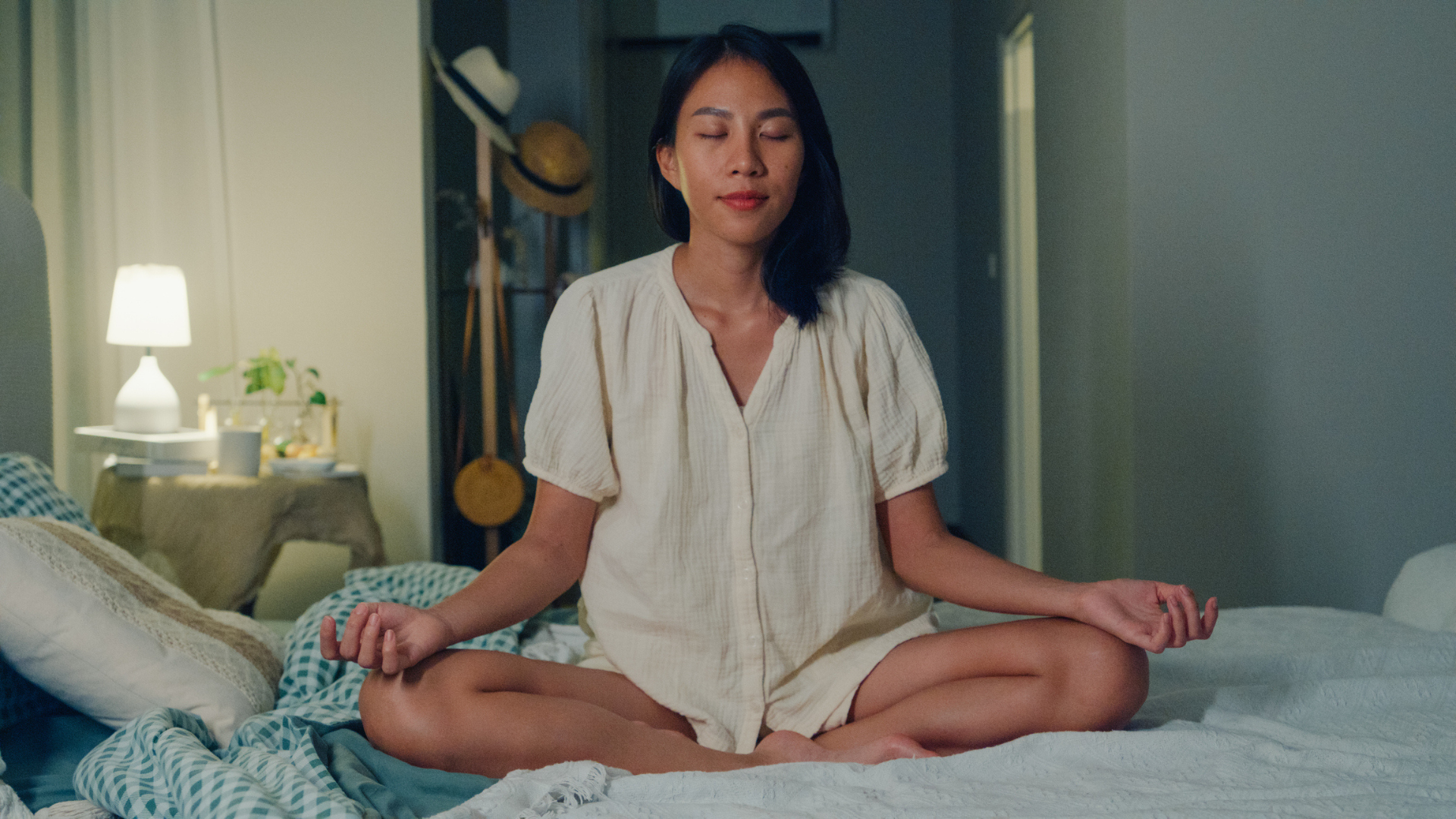
Because moon breathing does not involve holding your breath, it can also be good breathing technique for those who are sensitive to breath retention, she says, or, those who find it distressing or physiologically uncomfortable.
That could include people with a panic disorder or asthma.
"4-7-8 is best suited for people with experience in controlled breathing or mindfulness," says Dr. Kaylor.
"The extended breath-hold can feel challenging for beginners or those with respiratory sensitivity," she adds, noting that it can suit others too, including those who benefit from structure and counting, and those with sleep-onset insomnia.
This is because "studies and anecdotal evidence suggest that 4-7-8 is particularly effective at quieting the mind and inducing a sleep-conducive state."
Why does deep breathing help us sleep?
Stress and anxiety relief
Stress and anxiety are typically associated with higher levels of cortisol, which can increase heart rate and blood pressure.
Cortisol is also the sleep hormone associated with making us feel awake and alert, which means that when it's increased, sleep will be more difficult.
However, a review of studies looking at the effects of breathing exercises found "that breathing exercises have positive effect on decreasing the blood pressure and heart rate."
Dr. Kaylor says, deep breathing can also help to "release physical tension in the body, particularly in the shoulders, chest, and jaw."
And, in giving our brains something simple and rhythmic to focus on, deep breathing techniques can "interrupt cognitive rumination."

Can help increase melatonin production
Deep breathing has even been shown to increase melatonin production, the hormone our bodies produce in the evening and which helps us to feel sleepy.
One study found that a group of 15 participants who practiced deep breathing alongside meditation and yogic postures for a period of three months saw an increase in plasma melatonin (which is the concentration of melatonin in our blood).
In addition, Dr. Kaylor explains that deep breathing can "reduce cortisol levels, allowing melatonin to rise naturally."
As well as helping you drift off in a calmer state, it can also help your overall sleep. Research showed that when a group of students practiced moon breathing for four weeks it “led to improvement in sleep quality."
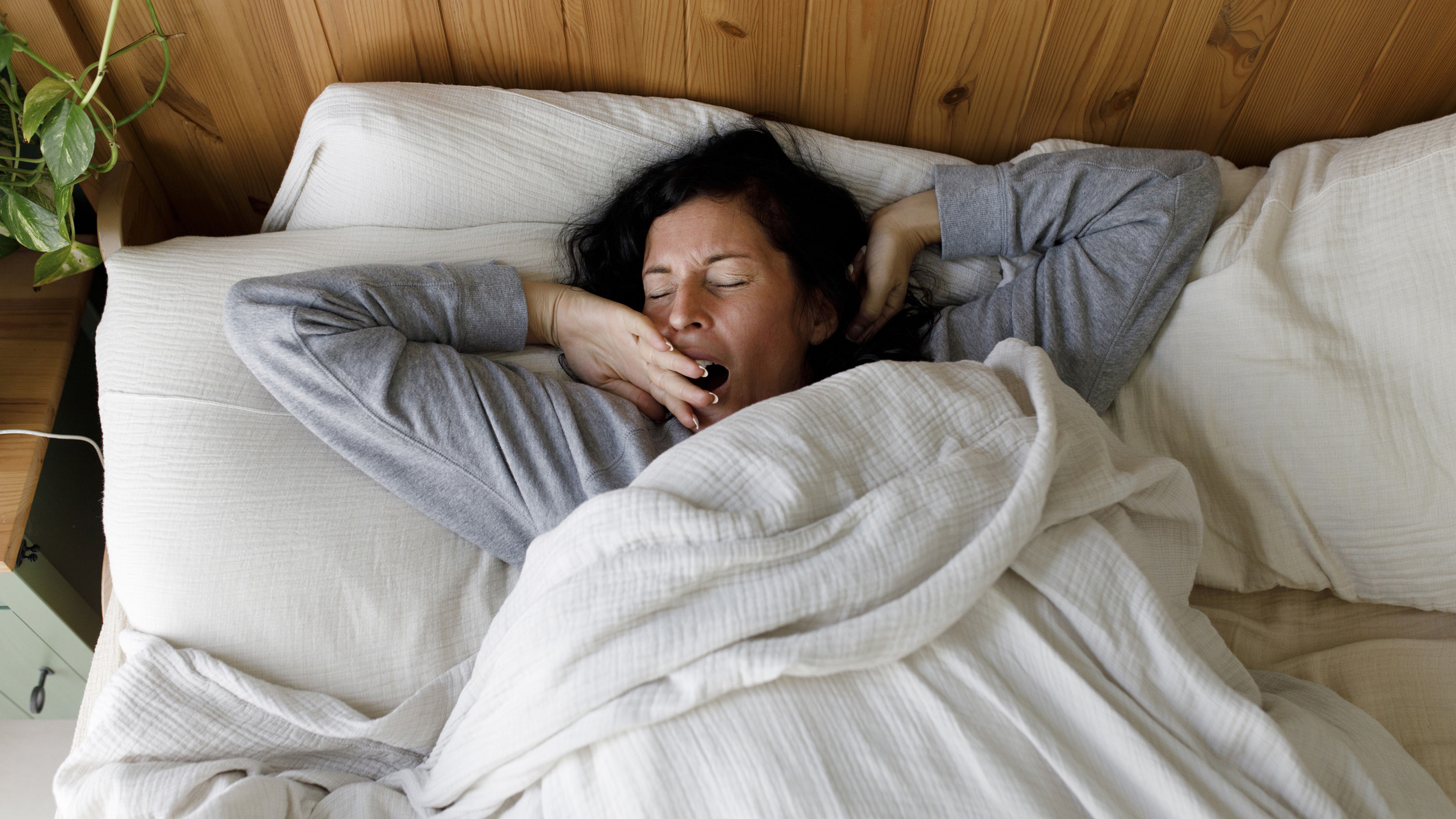
Activates parasympathetic nervous system
Deep breathing is an incredibly affective way of activating our parasympathetic nervous system, creating a sense of calm and relaxation needed for sleep.
Slower, deeper breaths into your diaphragm, "increases the pressure of oxygen in the air sacs, making it easier for oxygen molecules to move into the blood via the capillaries," neuroscience researcher Dr. Yewande Pearce explains in this useful Headspace video.
Jenny Haward is a U.K. based freelance journalist and editor with more than 15 years of experience in digital and print media. Her work has appeared in PEOPLE, Newsweek, Huffpost, Stylist, ELLE, The Sydney Morning Herald and more. Jenny specializes in health, wellness and lifestyle, taking a particular interest in sleep.
You must confirm your public display name before commenting
Please logout and then login again, you will then be prompted to enter your display name.
